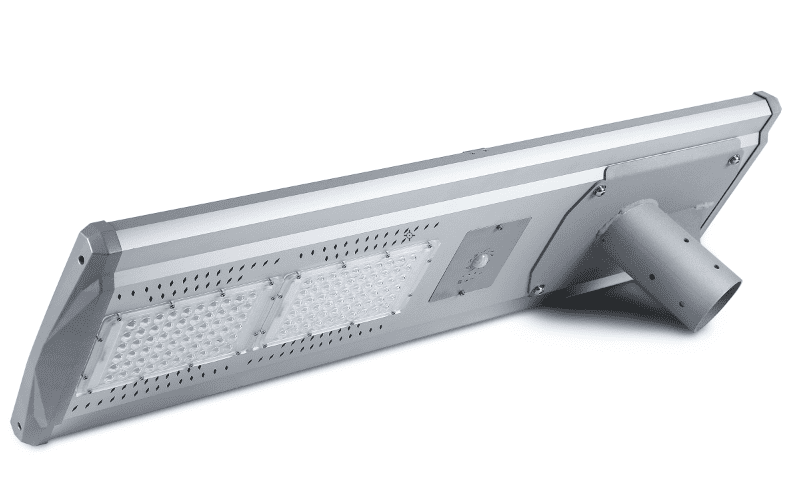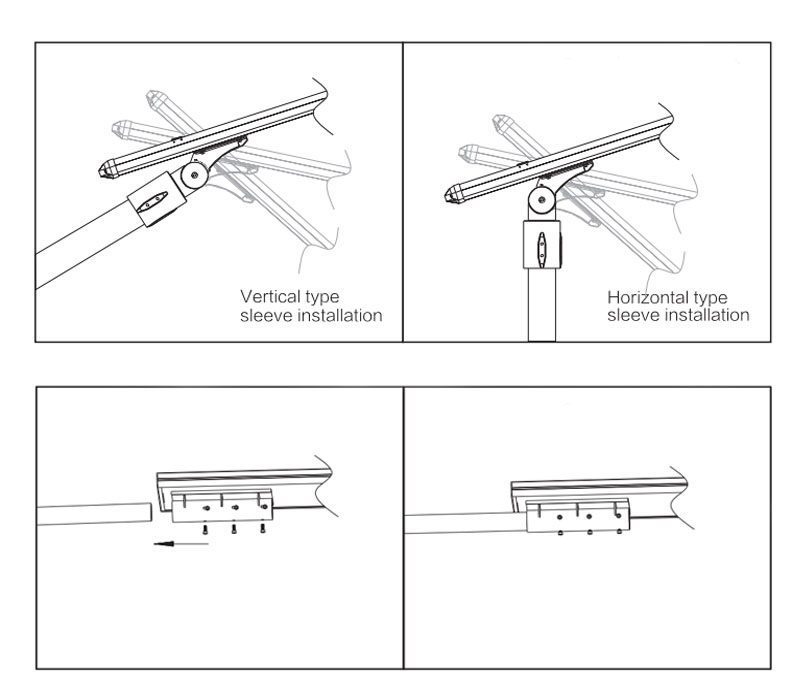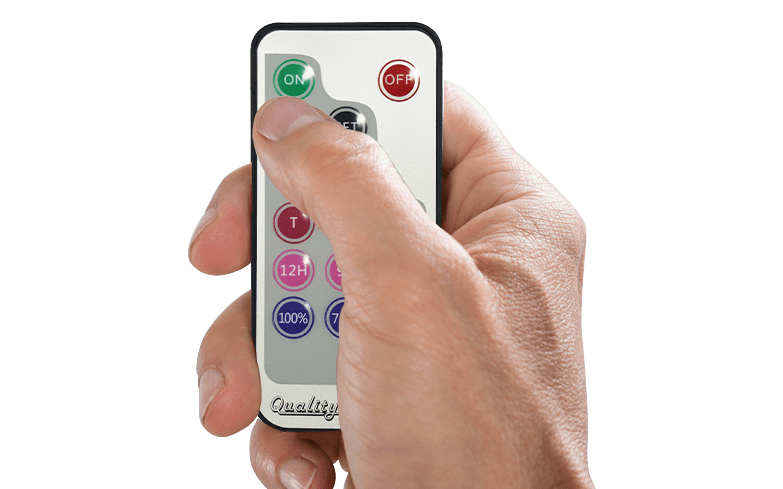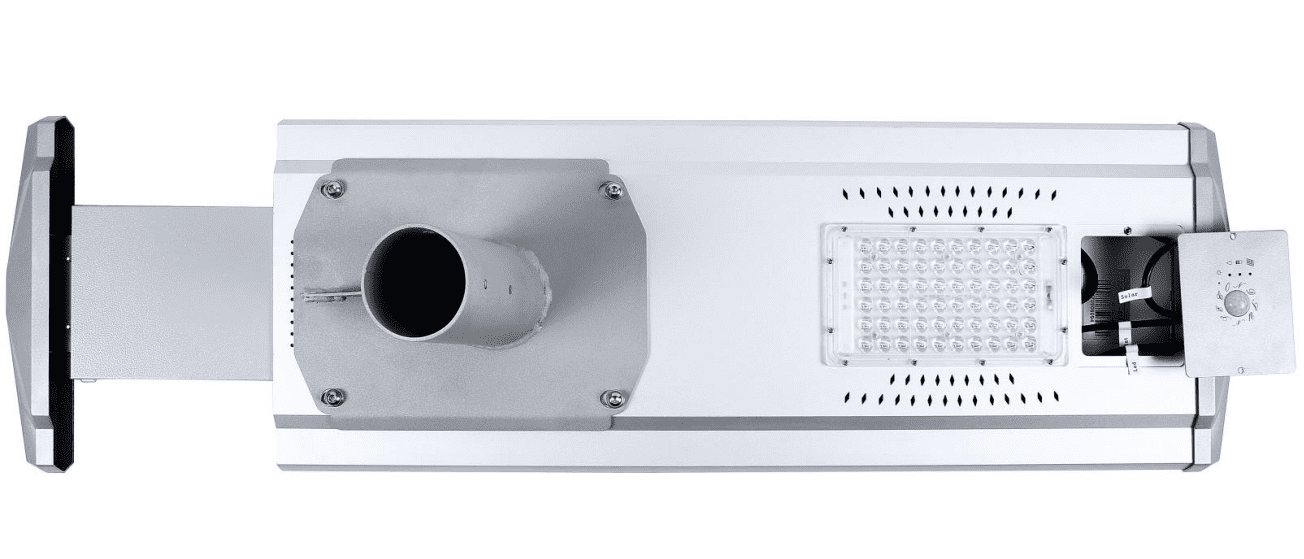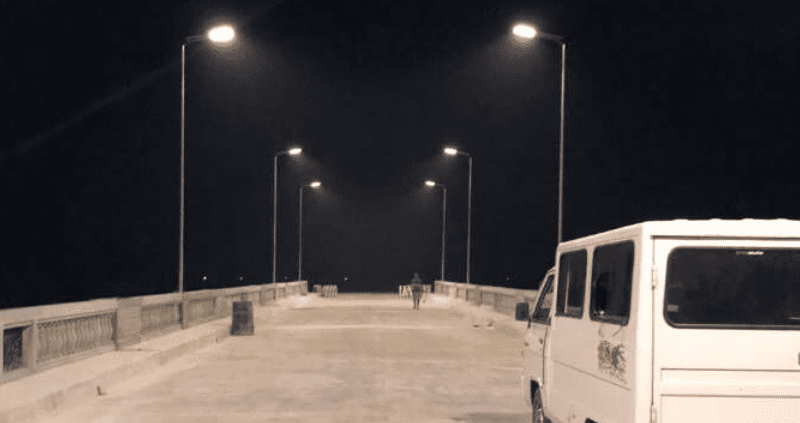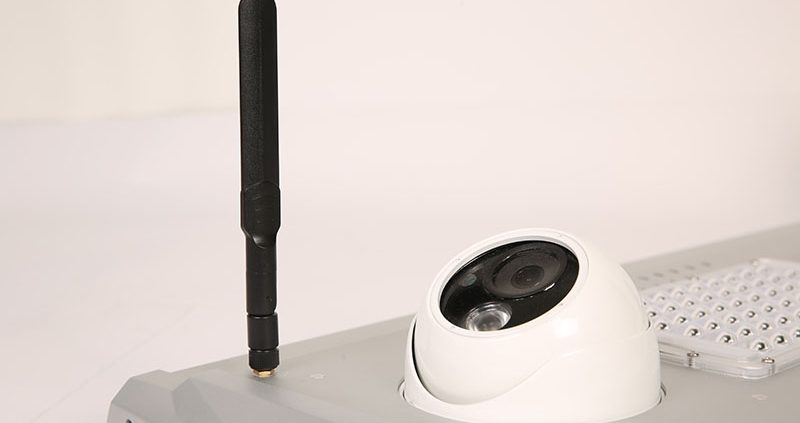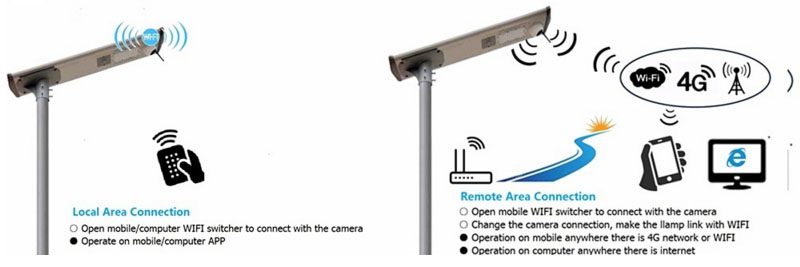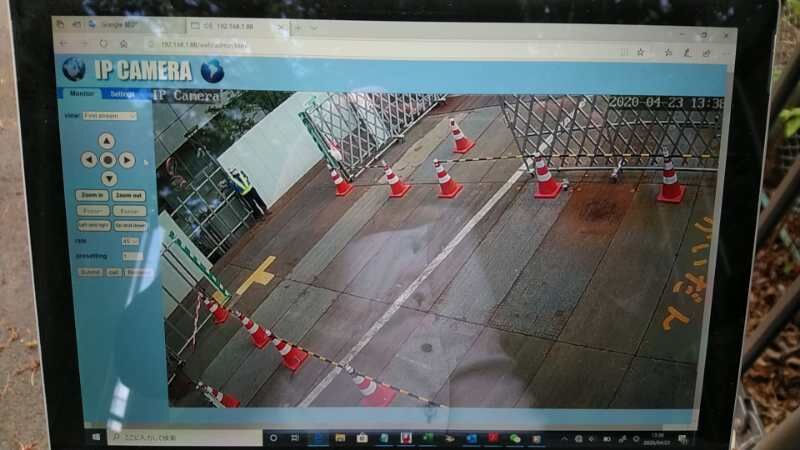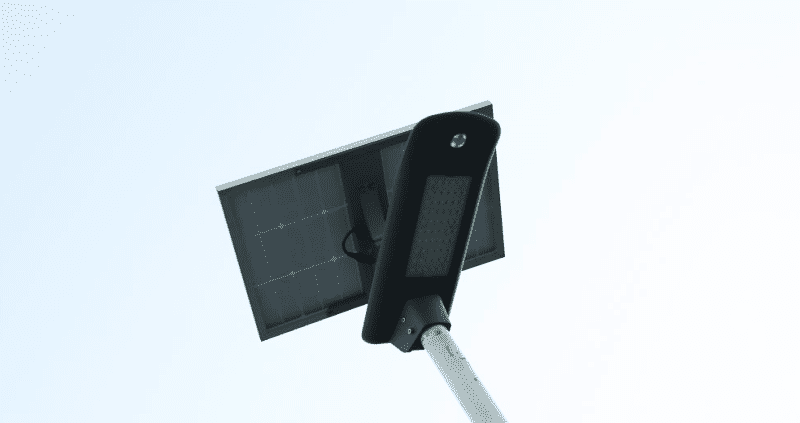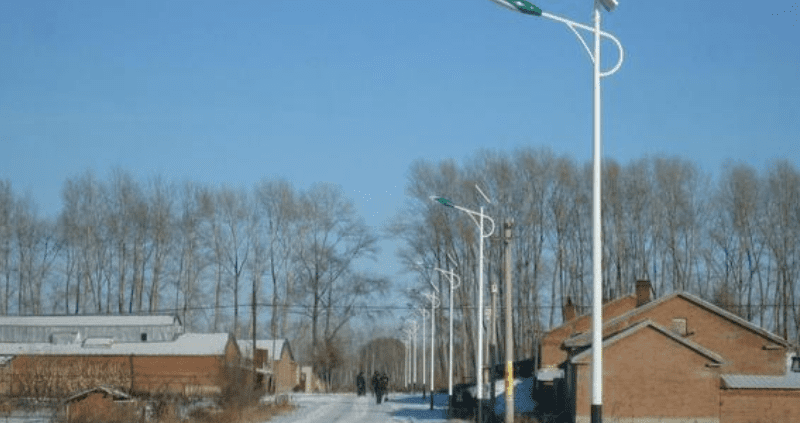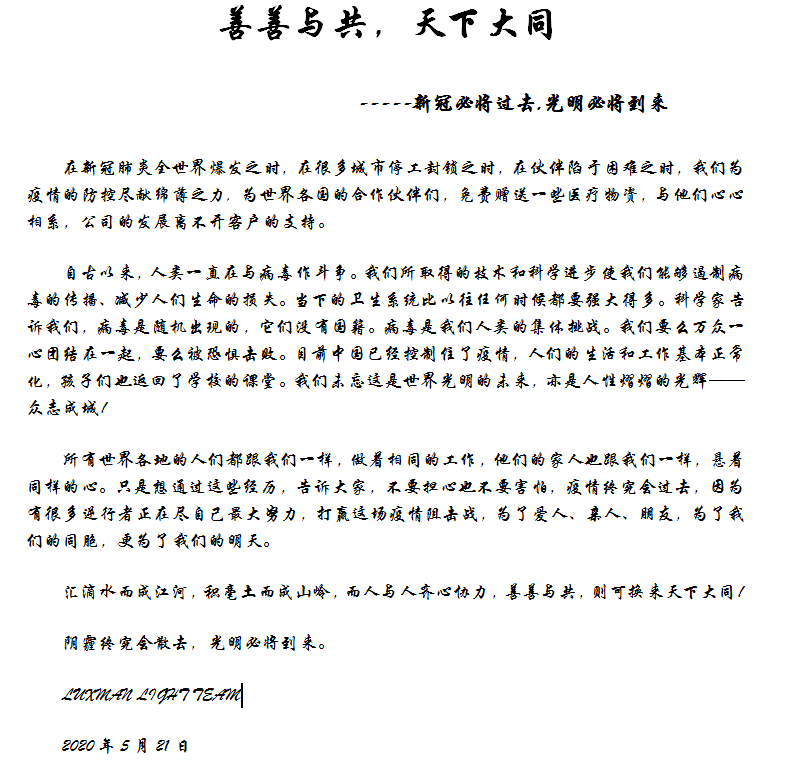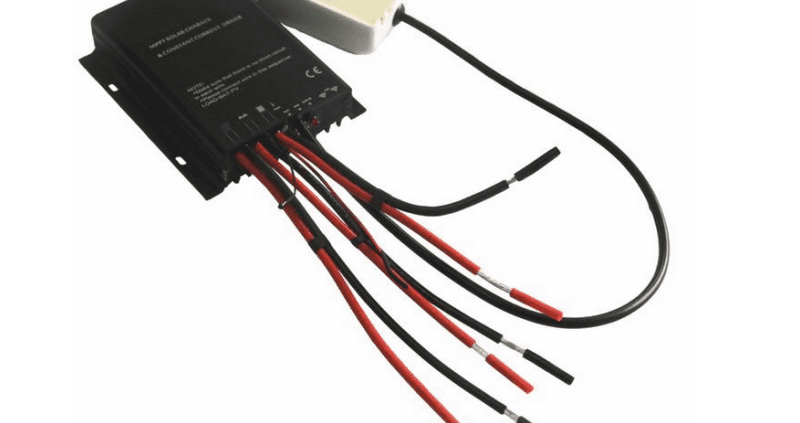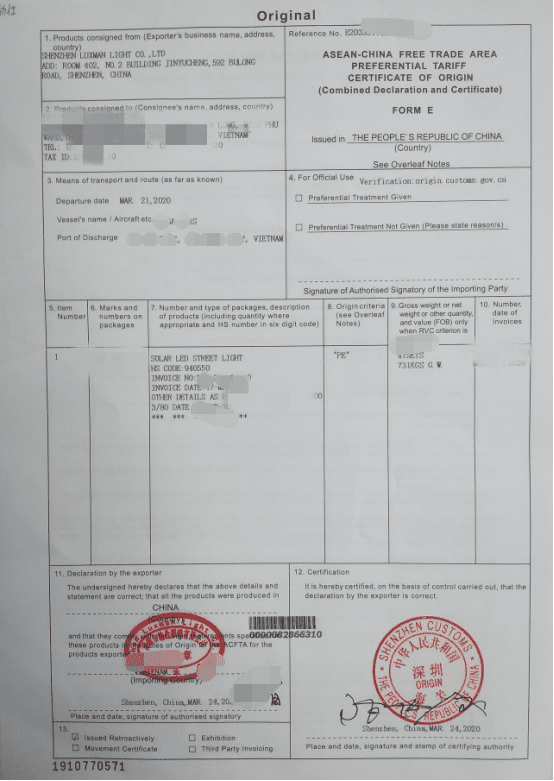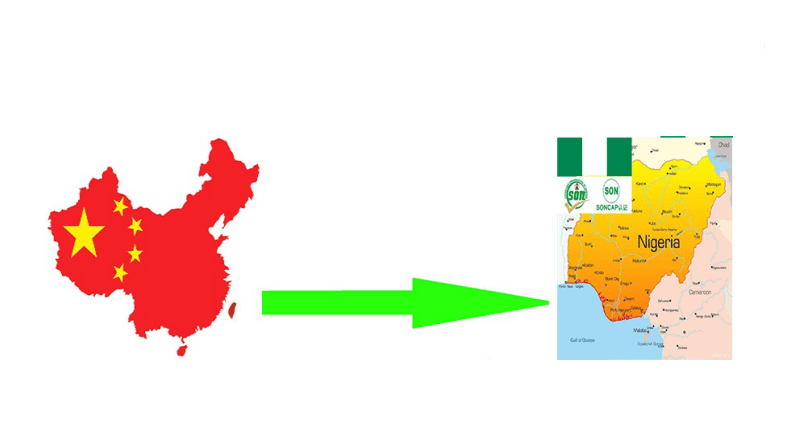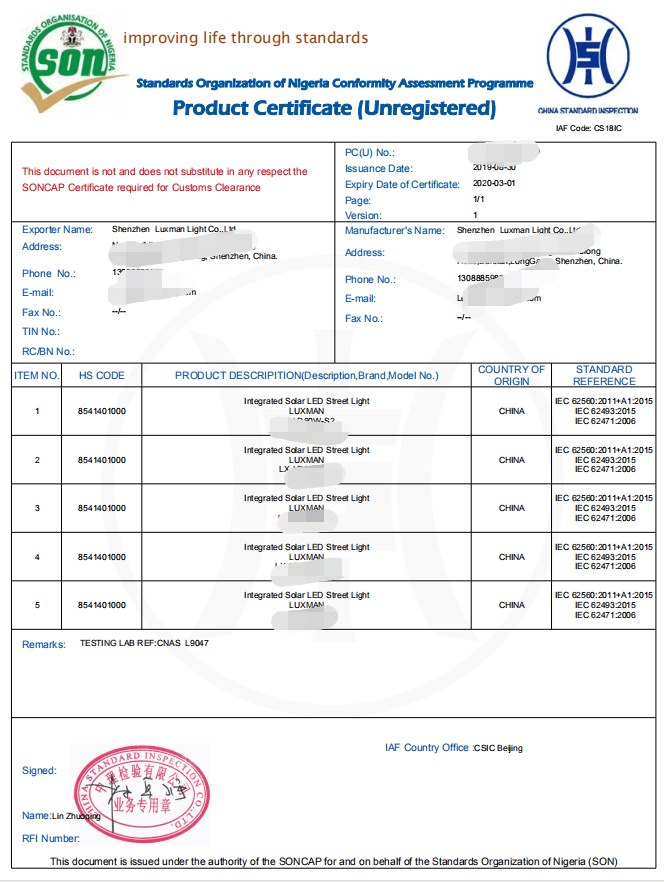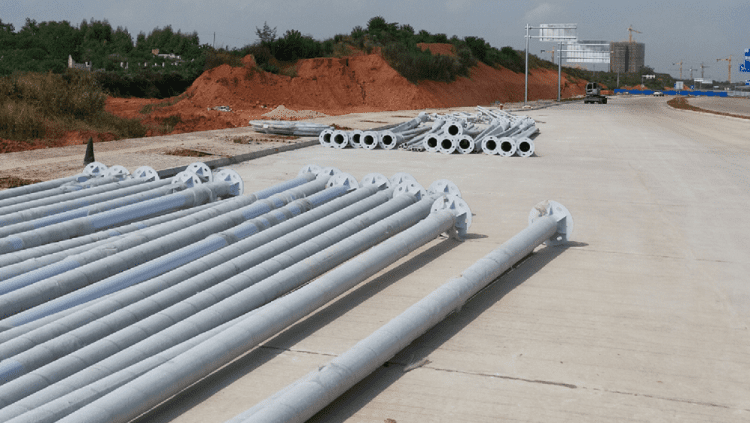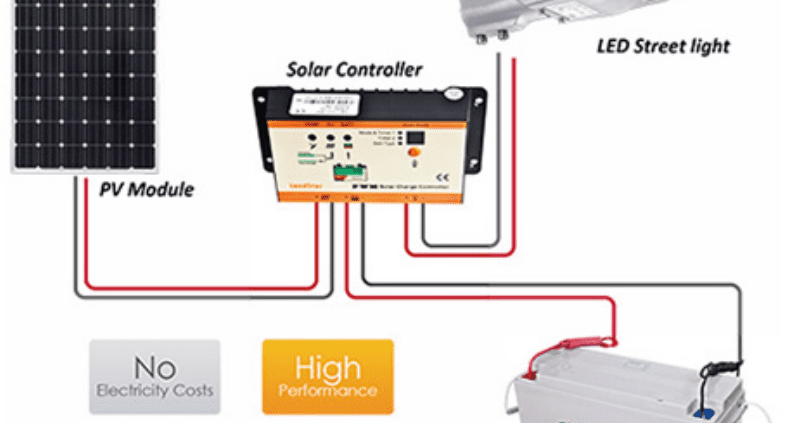分体式太阳能路灯由太阳能电池板(含支架)、灯头、控制箱(含控制器、蓄电池等)和灯杆、基础等组成。分体式太阳能路灯一般自成供电系统,不与电网连接。有两种 太阳能路灯 系统:12 伏和 24 伏。
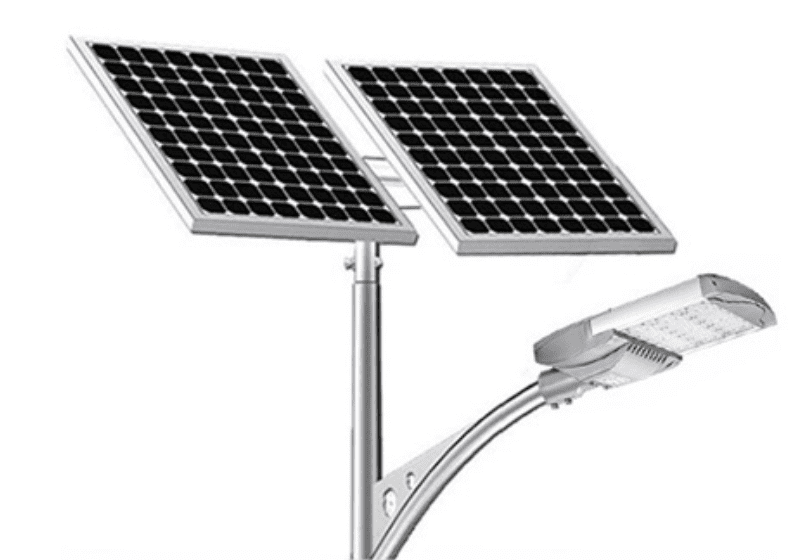
太阳能电池的选择
1.Types:
太阳能电池将太阳能转化为电能。比较实用的太阳能电池有三种:单晶硅、多晶硅和非晶硅。
1) 单晶硅太阳能电池性能参数相对稳定。适合在阴雨天较多、日照较少的南方地区使用;
2) 多晶硅太阳能电池生产工艺相对简单,价格低于单晶硅。适合在日照充足、光照良好的东西部地区使用;
3) 非晶硅太阳能电池对日照条件要求不高,适用于日照不足的室外地区。
2.工作电压
太阳能电池的工作电压约为蓄电池电压的 1.5 倍,可以保证蓄电池的正常充电。为 6V 电池充电需要 8-9V 电压
就太阳能电池而言,为 12 伏蓄电池充电需要 15-18 伏的太阳能电池。为 24 伏蓄电池充电需要 33-36 伏的太阳能电池。
3.输出功率 WP
太阳能电池单位面积的输出功率约为 127wp / m2。
太阳能电池一般由多个太阳能电池串联组成,其容量取决于照明光源和传输组件的总消耗量。
功率与当地太阳辐射有关。太阳能电池的输出功率应是光源功率的 3-5 倍以上:光照充足且灯亮时
短日照面积超过(3-4)倍,反之亦然。
4 平均高峰日照时数 H
太阳能电池的输出功率 WP 是欧洲委员会规定的标准日照条件下的 10L 标准,辐射强度为 1000W / m2,太阳能电池在大气质量 AM1.5、电池温度 252c 时的输出功率。同一太阳能电池在不同时间和不同地点的输出功率是不同的。所谓标准条件就是接近晴天中午前后的日照条件。
表 1 中国不同地区的日照条件
| 地区分部 |
富裕地区 |
相对富裕地区 |
可用区域 |
贫困地区
|
|
年辐射总量
(KJ/cm2.年份)
|
≥580 |
500~580 |
420~500 |
≤420 |
|
地区 |
内蒙古西部、甘肃西部、新疆南部、青藏高原 |
新疆北部、东北地区、内蒙古东部、华北地区、陕西北部、宁夏、甘肃、青海东部 西藏高原、海南、台湾 |
东北北端、内蒙古呼伦、长江下游、福建、广东、广西、贵州、云南、河南、陕西 |
重庆、四川、贵州、广西和江西部分地区
|
| 连续阴雨天 |
2 |
3 |
7 |
5
|
| 特点 |
年日照≥3000 小时
百分比 ≥0.75 |
年日照 2400~3000h
百分比 0.6 ~ 0.7 |
年日照 1600 ~ 2400h
百分比 0.6~ 0.4 |
年日照≤1600 小时
百分比 ≤0.4
|
5.选择和安装太阳能灯组件。
一般情况下,分体式太阳能路灯杆都在5米以上,重心较高。太阳能电池板多为悬挂式,为增强整套设备的抗风能力,一般采用
选择多个太阳能电池板组成所需的组件功率。
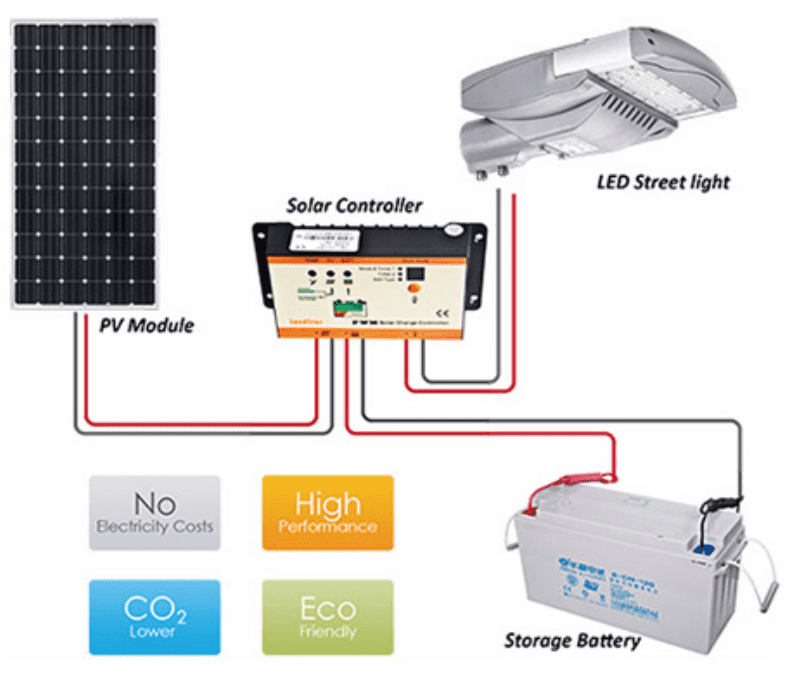
表-3 中国主要城市年平均日照时间和最佳安装角度
| 城市 |
纬度 |
最佳倾角(0) |
年平均日照时间(小时) |
城市 |
纬度 |
最佳倾角(0) |
年平均日照时间(小时) |
| 哈尔滨 |
45.68 |
+3 |
4.4 |
杭州 |
30.23 |
+3 |
3.42 |
| 长春 |
43.90 |
+1 |
4.8 |
南昌 |
28.67 |
+2 |
3.81 |
| 沈阳 |
41.77 |
+1 |
4.6 |
福州 |
26.08 |
+4 |
3.46 |
| 北京 |
39.8 |
+4 |
5 |
济南 |
36.68 |
+6 |
4.44 |
| 天津 |
39.10 |
+5 |
4.65 |
郑州 |
34.72 |
+7 |
4.04 |
| 呼和浩特 |
40.78 |
+3 |
5.6 |
武汉 |
30.63 |
+7 |
3.80 |
| 太原 |
37.78 |
+5 |
4.8 |
长沙 |
28.20 |
+6 |
3.22 |
| 乌鲁木齐 |
43.78 |
+12 |
4.6 |
广州 |
23.13 |
-7 |
3.52 |
| 西宁 |
36.75 |
+1 |
5.5 |
海口 |
20.03 |
+12 |
3.75 |
| 周岚 |
36.05 |
+8 |
4.4 |
南宁 |
22.82 |
+5 |
3.54 |
| 银川 |
38.48 |
+2 |
5.5 |
成都 |
30.67 |
+2 |
2.87 |
| 西安 |
34.30 |
+14 |
3.6 |
贵阳 |
26.58 |
+8 |
2.84 |
| 商海 |
31.17 |
+3 |
3.8 |
昆明 |
25.02 |
-8 |
4.26 |
| 南靖 |
32.00 |
+5 |
3.94 |
拉萨 |
29.70 |
-8 |
6.7 |
电池选择
电池可以储存太阳能电池板在照明时产生的电能,然后在夜间需要照明时释放出来。
主要讨论了带蓄电池的分体式太阳能路灯系统
类型选择
1) 铅酸蓄电池(CS):适用于低温高倍率放电,比能量低,目前大部分为分体式太阳能路灯。免维护密封,价格低。注意防止铅酸污染,应逐步淘汰。
2) 镍镉(Ni Cd)电池:放电率高,低温性能好,循环寿命长,系统小。注意防止镉污染。
3) 镍氢电池:放电率高,低温性能好,价格低廉,无污染,是绿色环保电池。系统小。
4) 锂电池:体积小、温度性能好、无污染、寿命长。
目前,由于环保和体积等原因,铅酸免维护电池、普通铅酸电池和碱性镍镉电池的使用越来越少。人们更倾向于使用设计更加紧凑的锂电池,尤其是性能稳定、寿命长的磷酸铁锂电池。
容量选择
电池容量太小,不能满足夜间照明的需要,如果容量太大,电池始终处于亏电状态,影响电池寿命、
同时也会造成浪费。蓄电池容量(ah)与负载容量(ah)之比应大于 3-6 倍:在连续阴雨天较少的地区,应大于 3-4 倍。
雨天则是这个数字的 5-6 倍。
电池连接
并联时,应考虑每个单元的不平衡效应。并联组数不应超过
注意电池防盗。
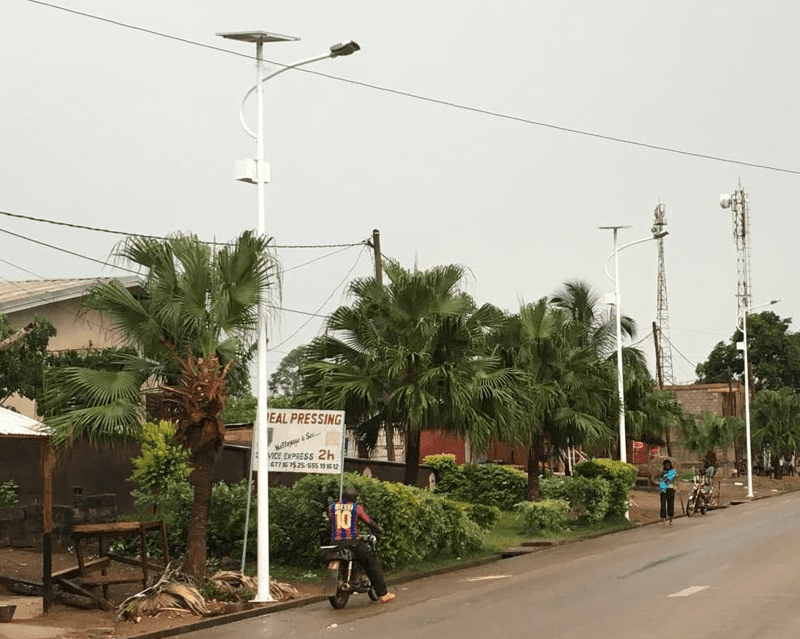
控制器
太阳能路灯的运行由控制器控制。大多数控制器实现了智能控制。控制器应具备以下功能:
1.路灯控制
可提供灯光控制、时间控制、温度控制和其他功能。具有调光(或午夜灯光)功能
2.电池管理
限制电池的充电和放电条件,以延长其使用寿命:
1) 反向充电控制:
2) 防过充控制:
3) 防过放控制;
4) 温度补偿。
自动保护
太阳能电池反接保护、蓄电池反接保护、蓄电池开路保护、夜间反向充电保护、输出短路保护等。
指示灯显示
显示太阳能路灯主要部件的工作状态:蓄电池、太阳能电池、LED 灯等。
控制器电压
控制器电压 = 电池电压。
太阳能电池的倾角设计
太阳能电池倾斜角是指太阳能电池板平面与水平地面之间的夹角。
太阳能电池组件的倾角(指太阳能电池平面与地平面之间的夹角)在很多技术领域都有讨论。根据位置确定倾斜角。
设置(纬度等)来确定;太阳能电池板的正面朝向太阳(或南稍偏西),倾角与当地纬度一致。如果条件允许
太阳能电池板的倾斜角度可根据季节进行调整。
中国主要城市的太阳能电池安装角度见 "表 3"。
太阳能路灯的抗风设计
太阳能电池组件的抗风设计
根据最大风力,对olar 路灯进行抗风设计:
表 4 风力与风速的对应关系
| 名称 |
最大风速(米/秒) |
风力(级) |
名称 |
最大风速(米/秒) |
风力(级) |
| 热带低压(TD) |
10.8 ~17.1 |
6~7(底部中央) |
台风(TY) |
32.7 ~ 41.4 |
12 ~13 |
| 热带风暴(TS) |
2 ~24.4 |
8~9 |
强台风(STY) |
41.5 ~ 50.9 |
14 ~15 |
| 强热带风暴(STS) |
24.5 ~ 32.6 |
10 ~11 |
超强台风(Super TY) |
>51.0 |
≥16 |
注:摘自 "GB/T 19201-2006"
中国南方台风较多。太阳能路灯杆至少能抗 12 级台风,北方大部分地区能抗 10 级大风。
路灯杆的抗风设计
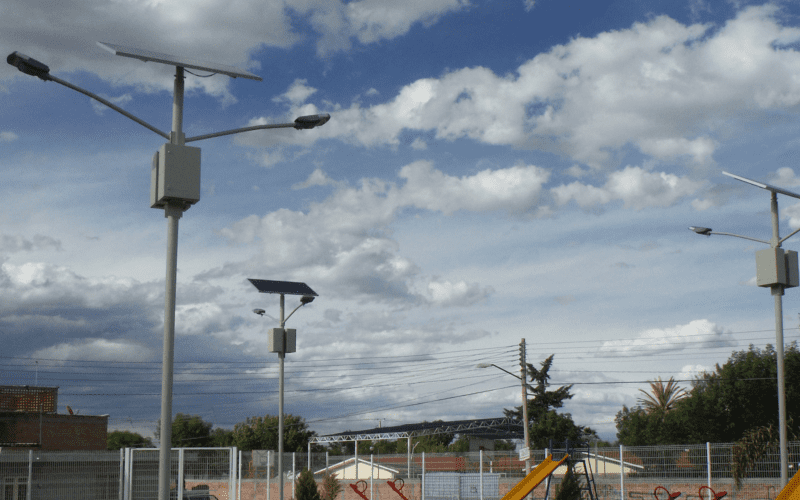
1) 太阳能电池组件:制造商应确保其能够承受当地风速而不受损害,重点是电池组件支架与灯杆之间的连接。
2) 照明杆和基础;路灯杆和基础的抗风设计以及电池板的高度、面积、倾角、杆结构、当地最大风速等。
相关计算和设计应由灯杆制造商或结构专业人员进行,以确保分体式太阳能路灯杆在最大风速下的稳定性。
太阳能照明的主要光源和应用
光源和太阳能系统有两种形式:
气体放电灯
1) 太阳能供电的 HID 灯电子镇流器(或触发器,下同)。实际上,它是一个直流/交流高值转换器。因此,分路式太阳能路灯照明系统一般不需要额外的直流/交流逆变器来减少电路损耗。这种形式适用于新建太阳能路灯项目。
2) 配备传统 HID 灯电子镇流器:与 AC220 主电源连接。其电子镇流器本质上是交流/直流/交流高频转换器。如果与太阳能系统连接,则应在蓄电池和气体放电灯电子镇流器之间加装直流/交流小型功率逆变器。这种形式适用于路灯改造。
LED 灯
太阳能路灯不需要额外的直流/交流逆变器来减少电路损耗,与传统太阳能路灯相比,可节省高达 65% 的能源。
应用:小功率太阳能 LED 灯用于住宅或商业区,如 5W / 10W / 15W / 25W / 30W 等。大功率太阳能路灯一般用于工业园区和道路照明,如 40W / 60W / 80W / 100W / 120W。
防雷和接地
安全电压
太阳能路灯一般使用 dcl2v 或 DC24V。这是一种安全电压,不做电气保护接地。
防雷和接地
1) 路灯和太阳能电池板不得用作避雷器;
2) 使用金属灯柱作为避雷器和引下线:
3) 当路灯基础钢筋笼低于-0.50m,且钢筋表面积大于 0.37m2 时,可作为防雷接地体。否则应加设人工接地极,接地电阻≤10 Ω。接地方式与一般路灯相同。
4) 在路灯控制器中设置 TVs(瞬态电压抑制)防雷功能
设计实例
分体式 LED 太阳能路灯将安装在上海的人行道上。灯高 5 米,路灯输入电压为 24V,功率为 70W,每天工作 8.5h,保证连续阴雨天 7 天提供照明。
试试分体式太阳能路灯设计。
1 太阳能电池的选择
1) 上海的年平均日照时间:查看 "表 - 1":3.8 小时。
2) 路灯的日耗电量:
(70/24) * 8.5 = 24.79 (安时)
3) 电池的总充电电流:
(24.79 *1.05)/(3.8*0.85)=8.06(A)
1.05 是太阳能电池组件系统的综合损耗系数,o. 85 是蓄电池的充电效率。
4) 太阳能电池的总功率
8.06 * 31.17 = 251.23 (W)
选择 2 块 Pm=135W 太阳能电池板并联。最佳工作电压为 34.8V。最佳工作电流为 3.88A。组件尺寸为 800*1580*50mm
2.电池选择
电池容量:8.06*(7+1)=64.48(安时)
选择免维护 DC24V - 70Ah 铅酸电池。
3.控制器
选择智能控制器。根据上海路灯系统的要求,调整控制器参数,保护路灯电池
4.太阳能电池的角度
查看 "表 - 1",上海太阳能电池的倾角:
31.170+30=34.170
太阳包的方向为正南稍偏西,地平倾角为 34.170
5.灯柱的抗风设计
尽可能使用太阳能路灯成套产品,由生产厂家提供合格的配套抗风灯杆材料和基础图纸,或由结构专业技术人员根据当地气候条件对灯杆和基础进行抗风设计或校核。
相关文章
https://luxmanlight.com/how-to-choose-batteries-for-your-solar-street-light-project/
